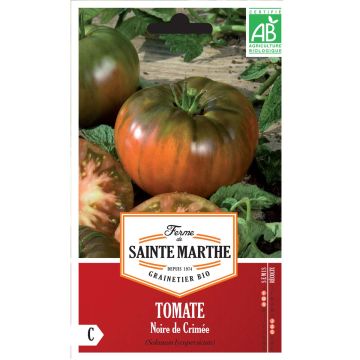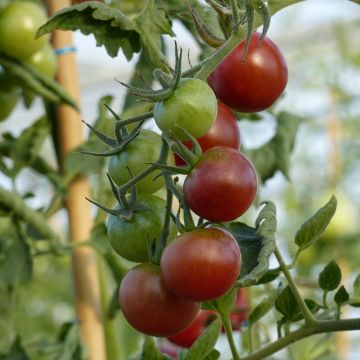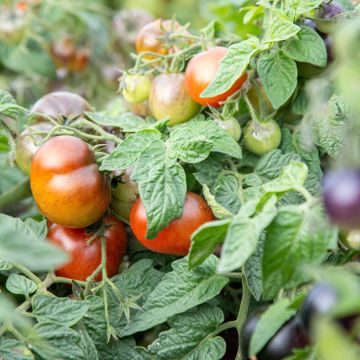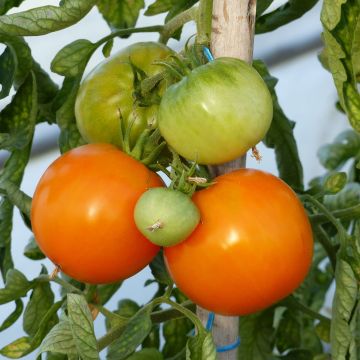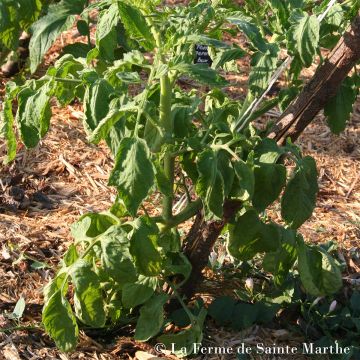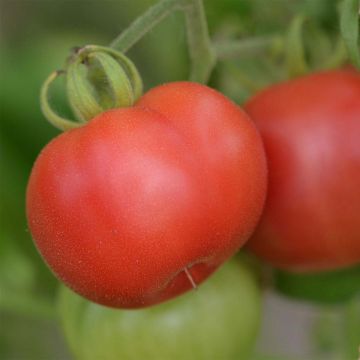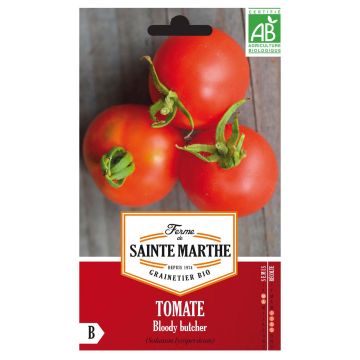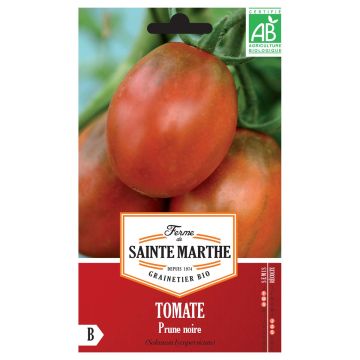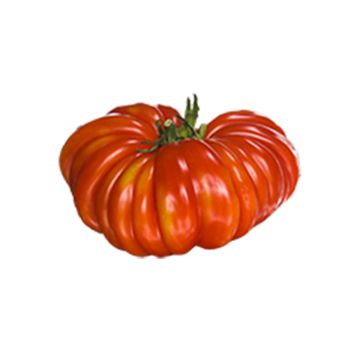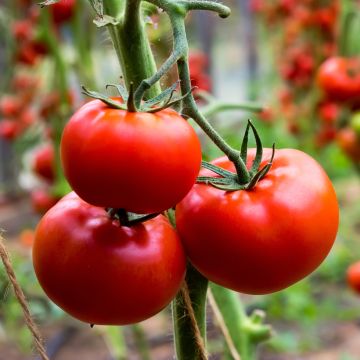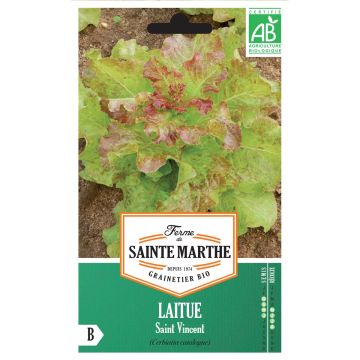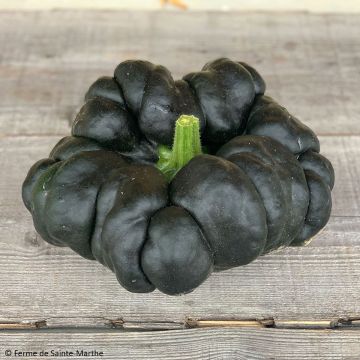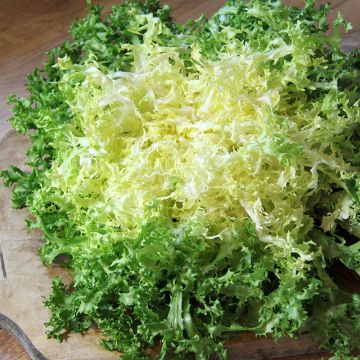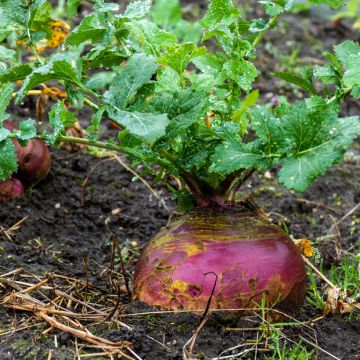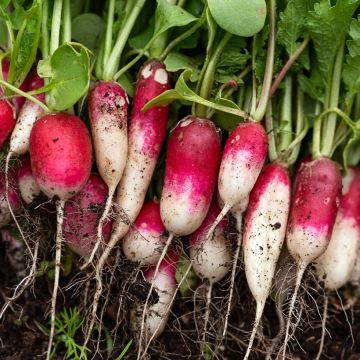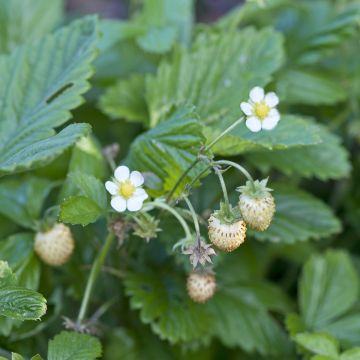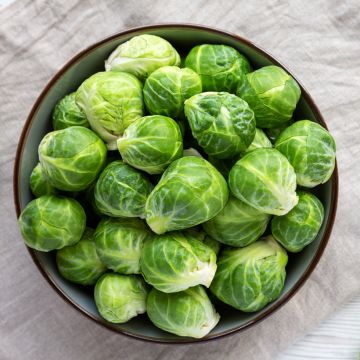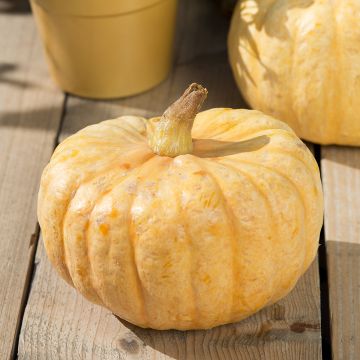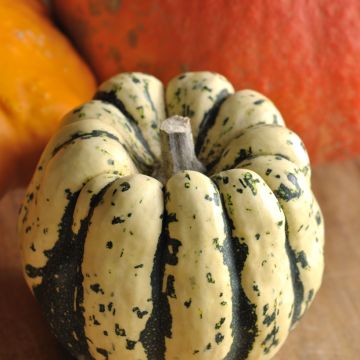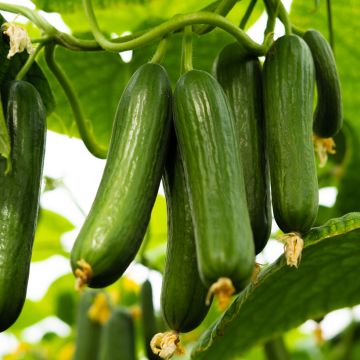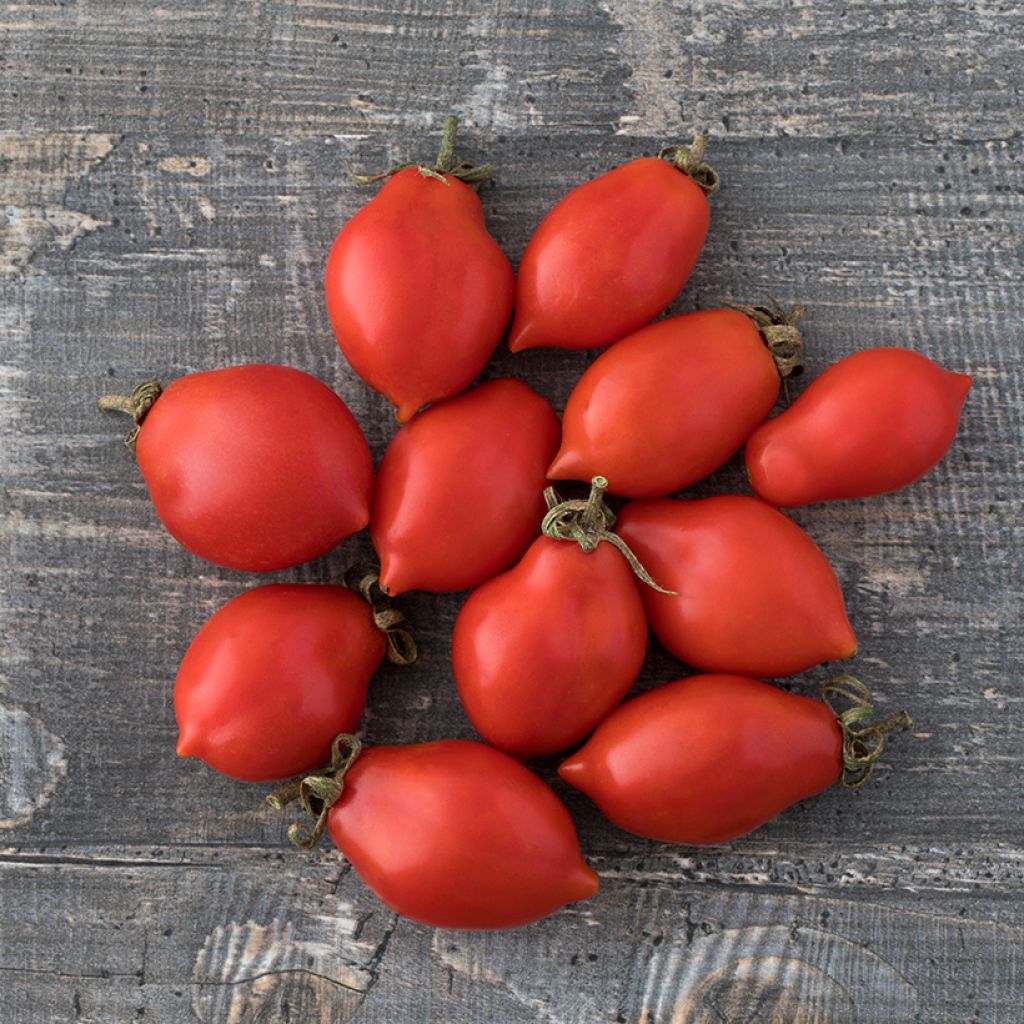

Tomato Principe Borghese organic seeds
Tomato Principe Borghese organic seeds
Solanum lycopersicum Prince Borghese (Principe Borghese)
Tomato
This item cannot be shipped to the selected country
Delivery charge from €5.90
More information
Schedule delivery date,
and select date in basket
This plant carries a 6 months recovery warranty
More information
We guarantee the quality of our plants for a full growing cycle, and will replace at our expense any plant that fails to recover under normal climatic and planting conditions.
From €5.90 for pickup delivery and €6.90 for home delivery
Express home delivery from €8.90.
Description
The Tomato 'Principe Borghese', is an old variety of cocktail type widely used in Italian cuisine and for drying. The plant, with indeterminate growth, produces clusters of small, bright red, ovoid fruits with small pointed tips. Its flesh is low in water and seeds making it suitable for sauces and juices, but especially for dried or candied tomatoes. It is also a particularly productive variety and its fruits store well. Sow from March to April, for a harvest from June to September.
The tomato 'Prince Borghese' has been known since the early 20th century. Originating from Italy, this variety was developed to meet the specific culinary needs of the region, particularly for the production of dried tomatoes. Its popularity has spread beyond Italian borders due to its taste qualities and versatility in cooking. The plant generally reaches a height of 1.20 m to 1.80 m. Its fruits are small, weighing between 30 and 80 grams. When ripe, they display a bright red colour. Their flesh is dense, with a rich and sweet flavour, low in juice and seeds. They are also used to prepare sauces, preserves, and purees.
Old varieties of tomato are plants with indeterminate growth and can live for two years. Newer varieties have what is called determinate growth and stop growing at the bush stage so they do not need staking or trellising.
The tomato originates from South America and Central America. Several varieties were already cultivated by the Incas long before the arrival of the Conquistadors. The variety of this nightshade plant is astonishing. The term "tomato" comes from the Inca Tomatl and refers to both the plant and the fruit from the plant. There are tomatoes of all colours (red, of course, but also green, yellow, and even some blue varieties), all shapes, and all sizes. The tomato plant is a perennial herbaceous plant in a tropical climate cultivated as an annual in our latitudes. It turns woody over time and produces small, insignificant yellow flowers clustered in cymes that will turn into fruits.
Low in calories like most vegetables and rich in water, the tomato contains lycopene, an antioxidant. The longer the tomato is cooked, the more it releases. Its flesh also contains vitamin C, provitamin A, and various trace elements. For the gardener, the tomato is a summer essential. Be careful, immature fruits, stems, and leaves contain solanine and should not be consumed.
Harvest: depending on the varieties, it can take 50 to 100 days between the transplant date and the harvest. Harvest when the fruit shows the colour expected at maturity and when its texture, while remaining firm, becomes slightly soft. For better storage, be sure to pick the fruit with its stalk.
Storage: tomatoes have a shorter shelf life if they have a high water content. They can be kept for a few days in the vegetable compartment of your refrigerator or spread out in the open air. To keep them longer, make tomato confit, dried tomatoes, sauces, freeze frozen fruits, make preserves, jams, or juices.
Gardener's tip: it is advisable to grow several tomato varieties to minimize the risk of a complete loss of harvest due to a climatic hazard or a specific pathology. To counteract the phenomenon of 'blossom end rot,' which is a calcium deficiency, spray a comfrey concoction on your plants.
When transplanting, you can bury the plant up to the first leaves to stimulate the production of nourishing roots.
Winning combinations in the garden are often the same on the plate: tomatoes and basil go well together in the vegetable garden.
Report an error about the product description
Harvest
Plant habit
Foliage
Botanical data
Solanum
lycopersicum
Prince Borghese (Principe Borghese)
Solanaceae
Tomato
Cultivar or hybrid
Annual
Other Tomato seeds
Planting and care
Soil preparation: Tomato plants 'Principe Borghese' are easy to grow. Sun and heat play a crucial role in the success of this crop. They can thrive in any type of soil, although they prefer rich and well-draining ones. You can enhance the substrate with a bit of sand if it is too compact.
Indoor sowing: From mid-February to May, sow indoors or in heated greenhouses in trays at around 20°C. Bury the seeds under 5 to 7 mm of seed compost, as they require darkness to germinate. Do not use fertiliser at this stage, as you might risk burning the future roots. Tomato plants grow very quickly: tomato seeds usually sprout within two weeks on average. Do not discard a tray if the seeds have not sprouted within this timeframe, as some varieties are slow to germinate. Once the plants have reached about fifteen centimetres, consider transplanting them.
Transplanting into the ground: Once the risk of frost has passed, usually after mid-May, transplant your seedlings into the ground. Choose the sunniest and warmest spots in the garden. At the base of a south-facing wall is an ideal position. Loosen the soil and dig a hole at least 3 to 4 times the volume of the root system of your plant. Add some well-rotted compost at the bottom. Plant your seedling, which can be buried up to the first leaves, then backfill. Firm the soil, create a basin around the plant, and water generously. Be careful not to wet the leaves to protect your plants from fungal diseases.
Maintenance: Applying mulch around your plants helps retain some moisture and reduces the need for weeding. Tomato plants do not require much watering, as their root system delves deep to find available resources. Water generously only in case of prolonged dry spells.
Seedlings
Care
Intended location
This item has not been reviewed yet - be the first to leave a review about it.
Vegetable seeds
Haven't found what you were looking for?
Hardiness is the lowest winter temperature a plant can endure without suffering serious damage or even dying. However, hardiness is affected by location (a sheltered area, such as a patio), protection (winter cover) and soil type (hardiness is improved by well-drained soil).

Photo Sharing Terms & Conditions
In order to encourage gardeners to interact and share their experiences, Promesse de fleurs offers various media enabling content to be uploaded onto its Site - in particular via the ‘Photo sharing’ module.
The User agrees to refrain from:
- Posting any content that is illegal, prejudicial, insulting, racist, inciteful to hatred, revisionist, contrary to public decency, that infringes on privacy or on the privacy rights of third parties, in particular the publicity rights of persons and goods, intellectual property rights, or the right to privacy.
- Submitting content on behalf of a third party;
- Impersonate the identity of a third party and/or publish any personal information about a third party;
In general, the User undertakes to refrain from any unethical behaviour.
All Content (in particular text, comments, files, images, photos, videos, creative works, etc.), which may be subject to property or intellectual property rights, image or other private rights, shall remain the property of the User, subject to the limited rights granted by the terms of the licence granted by Promesse de fleurs as stated below. Users are at liberty to publish or not to publish such Content on the Site, notably via the ‘Photo Sharing’ facility, and accept that this Content shall be made public and freely accessible, notably on the Internet.
Users further acknowledge, undertake to have ,and guarantee that they hold all necessary rights and permissions to publish such material on the Site, in particular with regard to the legislation in force pertaining to any privacy, property, intellectual property, image, or contractual rights, or rights of any other nature. By publishing such Content on the Site, Users acknowledge accepting full liability as publishers of the Content within the meaning of the law, and grant Promesse de fleurs, free of charge, an inclusive, worldwide licence for the said Content for the entire duration of its publication, including all reproduction, representation, up/downloading, displaying, performing, transmission, and storage rights.
Users also grant permission for their name to be linked to the Content and accept that this link may not always be made available.
By engaging in posting material, Users consent to their Content becoming automatically accessible on the Internet, in particular on other sites and/or blogs and/or web pages of the Promesse de fleurs site, including in particular social pages and the Promesse de fleurs catalogue.
Users may secure the removal of entrusted content free of charge by issuing a simple request via our contact form.
The flowering period indicated on our website applies to countries and regions located in USDA zone 8 (France, the United Kingdom, Ireland, the Netherlands, etc.)
It will vary according to where you live:
- In zones 9 to 10 (Italy, Spain, Greece, etc.), flowering will occur about 2 to 4 weeks earlier.
- In zones 6 to 7 (Germany, Poland, Slovenia, and lower mountainous regions), flowering will be delayed by 2 to 3 weeks.
- In zone 5 (Central Europe, Scandinavia), blooming will be delayed by 3 to 5 weeks.
In temperate climates, pruning of spring-flowering shrubs (forsythia, spireas, etc.) should be done just after flowering.
Pruning of summer-flowering shrubs (Indian Lilac, Perovskia, etc.) can be done in winter or spring.
In cold regions as well as with frost-sensitive plants, avoid pruning too early when severe frosts may still occur.
The planting period indicated on our website applies to countries and regions located in USDA zone 8 (France, United Kingdom, Ireland, Netherlands).
It will vary according to where you live:
- In Mediterranean zones (Marseille, Madrid, Milan, etc.), autumn and winter are the best planting periods.
- In continental zones (Strasbourg, Munich, Vienna, etc.), delay planting by 2 to 3 weeks in spring and bring it forward by 2 to 4 weeks in autumn.
- In mountainous regions (the Alps, Pyrenees, Carpathians, etc.), it is best to plant in late spring (May-June) or late summer (August-September).
The harvesting period indicated on our website applies to countries and regions in USDA zone 8 (France, England, Ireland, the Netherlands).
In colder areas (Scandinavia, Poland, Austria...) fruit and vegetable harvests are likely to be delayed by 3-4 weeks.
In warmer areas (Italy, Spain, Greece, etc.), harvesting will probably take place earlier, depending on weather conditions.
The sowing periods indicated on our website apply to countries and regions within USDA Zone 8 (France, UK, Ireland, Netherlands).
In colder areas (Scandinavia, Poland, Austria...), delay any outdoor sowing by 3-4 weeks, or sow under glass.
In warmer climes (Italy, Spain, Greece, etc.), bring outdoor sowing forward by a few weeks.

































